Bardiya National Park, Nepal’s largest protected area, is a treasure trove of biodiversity. The park spans 968 sq. km of pristine wilderness in the Terai region. Among over 400 bird species, it is especially home to one-horned rhinoceros and endangered Bengal tigers. Originally founded in 1988, Bardiya is very important for Nepal’s efforts at wildlife preservation. The Sal forests and grasslands of the park provide essential homes for many different species. Thrilling safaris, witnessing rare animals, and Nepal’s natural splendour await guests.
Location
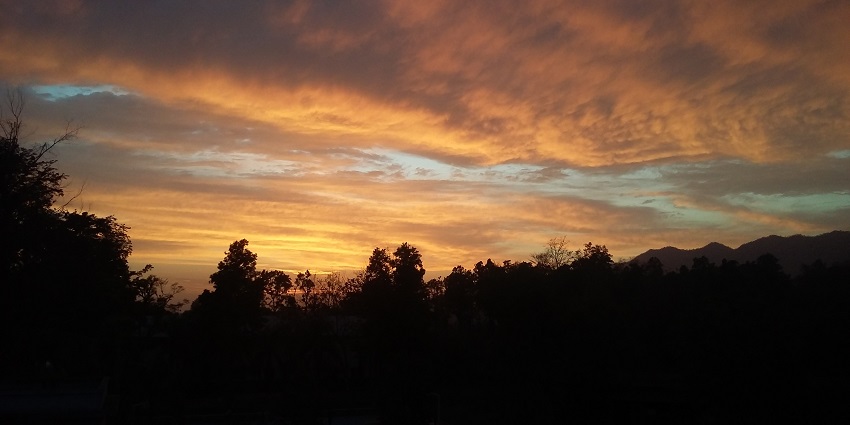
Photo: Aashutoshg1994 / Wikimedia Commons
Bardia National Park is located in Nepal’s Bardiya District, bordering India. This 968 sq. km sanctuary is Nepal’s largest, occupying the Terai lowlands. From riverine woods to grasslands, this Terai area key site offers a variety of ecosystems. The park’s ecological importance is further enhanced by its proximity to India, which permits wildlife movement between countries. Bardiya National Park address is 9H75+WV Bansagadhi, Nepal.
Suggested Read: Explore Top Wildlife Sanctuaries In Nepal For An Adventurous Retreat
How To Reach Bardiya National Park
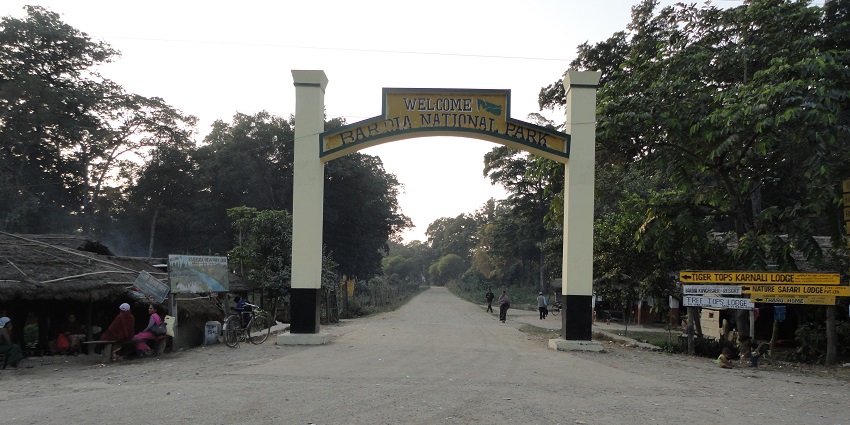
Photo: Ganesh Paudel / Wikimedia Commons
You can easily reach Bardiya National Park through either air, rail or road:
By Air: You can fly to Nepalgunj Airport from Kathmandu, a 50-minute journey. From Nepalgunj, an hour’s journey brings you to the park.
By Road: Buses from the Gongabu Bus Stand in Kathmandu go towards Mahendranagar. Get off at Ambassa and get another bus to Thakurdwara for Bardiya. The journey takes about 15 hours. From Pokhara, 12-hour buses pass Ambassa Bardia and go towards Mahendranagar or Dhungadi.
By Train: 100 km from the park, Nepalganj is the closest station. You will have to plan further travel from there through the road.
Places To Visit Around Bardiya National Park
After exploring Bardiya Nepal national park activities, here are the surrounding and interesting locations you should definitely check:
1. Tharu Museum
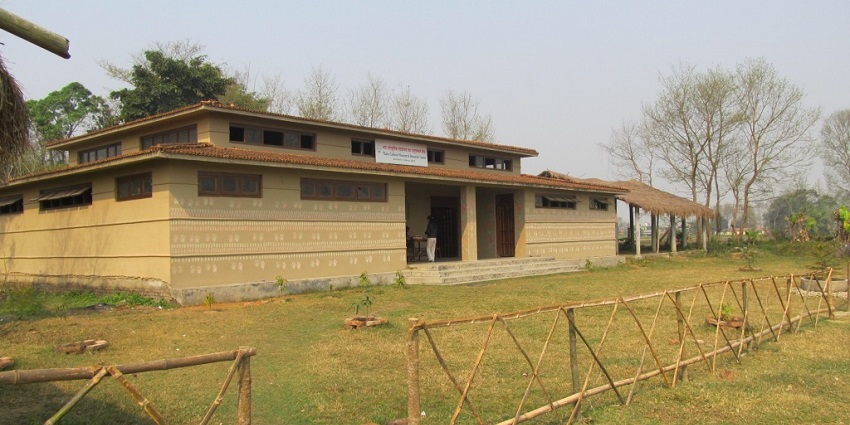
Photo: Nirmal Raj Joshi / Wikimedia Commons
The Tharu Museum, a popular destination near Bardia National Park, showcases the life of the indigenous Tharu people. It has a classic Tharu house loaded with real tools and relics that are still in use in everyday life. Visitors can explore exhibits highlighting Tharu culture, language, and customs. Though a visit to surrounding towns gives a more immersive experience, the museum offers a window into rural Nepalese life. Showing insight into the Tharu people’s particular way of life, displays include traditional clothing, farming implements, and household items.
Timings: 7 AM to 5:30 PM daily
Entry Fee: NPR 150 / ₹93 for foreigners and NPR 100 / ₹63 for locals
Suggested Read: Adventure Sports In Nepal For Every Adrenaline Junkie
2. Tharu Village
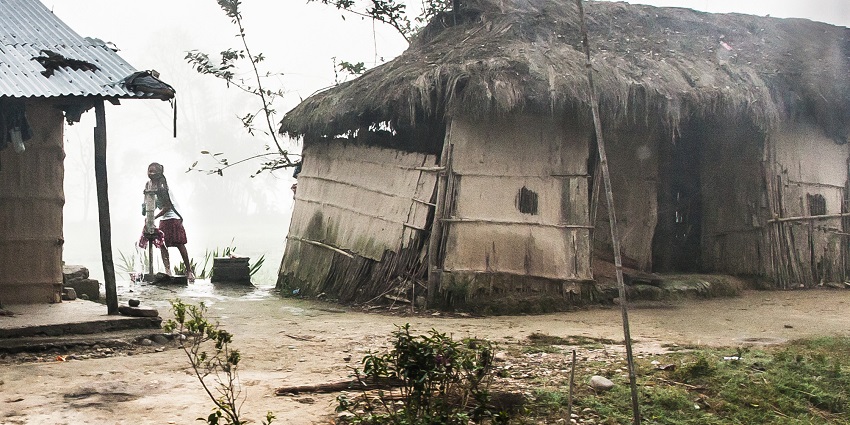
Photo: Jean-François Gornet / Wikimedia Commons
The Tharu village provides a real window into rural Nepalese life. Visitors may ride bicycles to explore the area, going through many settlements. The view is as beautiful as the forest, but there are fewer visitors around. Built from mud and thatch, Tharu houses exhibit classic design. Many times, villagers greet guests and provide an opportunity to see everyday operations like farming and weaving. Local guides can schedule traditional Tharu music and dance events. This interaction helps one understand the cultural variety of Nepal more deeply.
Timings: 24*7
Entry Fee: Free
3. Chisapani Bridge
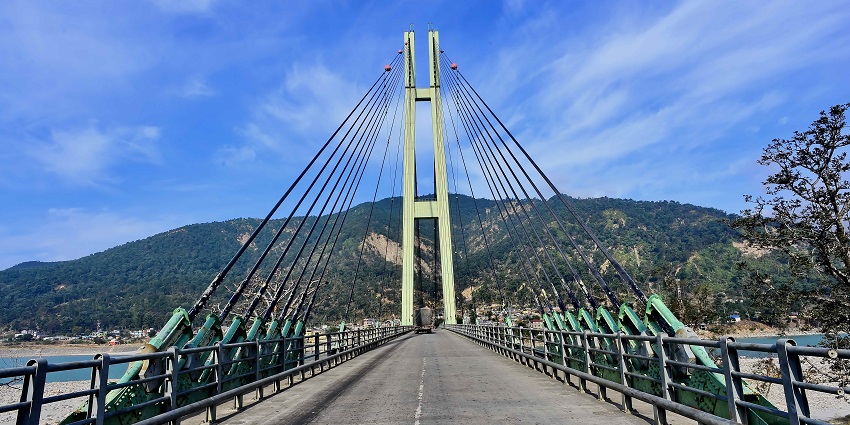
Photo: Rajesh Dhungana / Wikimedia Commons
The Chisapani Bridge, spanning the Karnali River, is a must-see destination near Bardiya National Park. This engineering marvel stands on a single pillar, offering spectacular views of the surrounding landscape. Adventurers may enjoy Karnali River rafting below. The starting location for rafting excursions to Kothiyaghat and Khauraha Creek is the bridge. These paths provide chances for watching animals as they pass close to the elephant stable in the park. The bridge area is also popular for picnics and photography, especially during sunset. Local guides sometimes relate tales about the building of the bridge and its significance for the area.
Timings: 24*7
Entry Fee: Free
Suggested Read: Experience The Vibrant Nepal Music Festival
4. Thakurdwar Temple
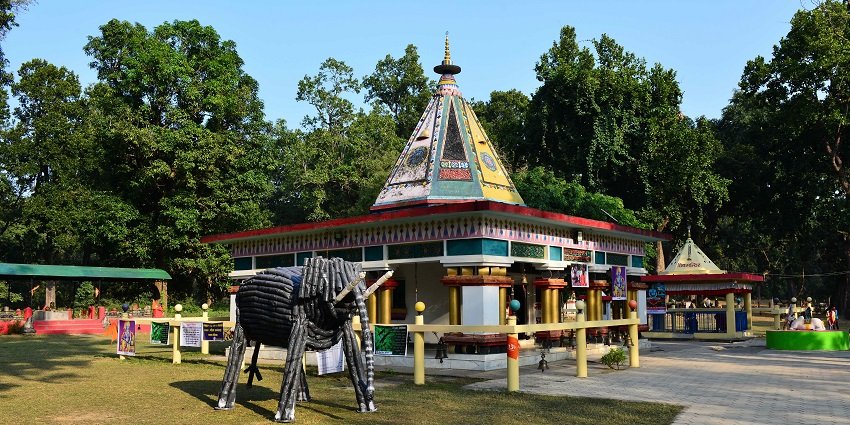
Photo: Rajesh Dhungana / Wikimedia Commons
Thakurdwar Temple is renowned for its artistic construction and spiritual significance. Devotees go far and wide, hoping that their desires will be realised. The design of the temple combines Hindu and indigenous Nepali forms. Starting on Maghe Sankranti day every year, a four-day “Maghi” fair showcases Tharu ethnic dances and Deuda performances. This celebration draws pilgrims as well as cultural vultures and highlights regional customs. The grounds of the temple provide a quiet haven with chances for meditation and reflection.
Entry Fee: Free
5. Khata Biological Corridor
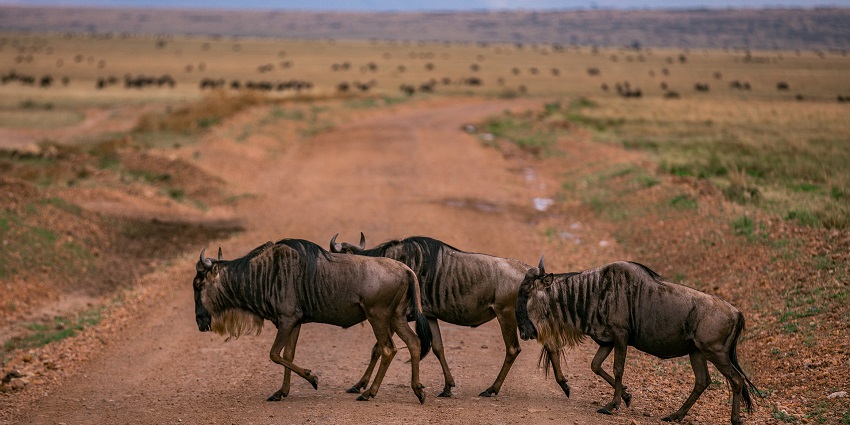
Photo: Content License / Pixabay / Image For Representation Only
Connecting Bardiya National Park with India’s Kartaniyaghat Wildlife Sanctuary, the Khata Biological Corridor is essential for the survival of many species. Found in the Madhuwan Municipality of Nepal, it is an important wildlife migratory corridor. Tigers, including cubs and elephants, are frequently spotted here. The corridor runs into surrounding community forests, including Sonahaphanta, Ganesh Sisnia, and Gauri Mahila. Through encouraging natural animal migration, this region plays an essential role in preserving biodiversity. Guided excursions provide chances to learn about conservation activities and animal watching.
Timings: 24*7
Entry Fee: Free
Suggested Read: Top Nepal Water Parks That Provide A Thrilling And Exciting Ride
Where To Stay
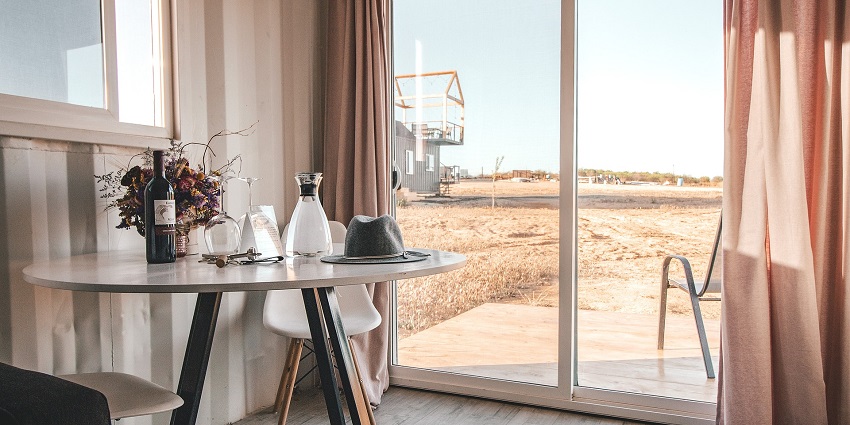
Photo: palacioerick / Pixabay / Image For Representation Only
To fit varied preferences and budgets, Bardiya National Park has many accommodation options. The main town close to the park, Thakurdwara, offers authentic homestays and basic accommodation. Travellers on the route may find accommodation in the little community of Ambassa, which runs along the highway. The biggest neighbouring city, Nepalgunj, offers a spectrum of choices from affordable to luxurious. Eco-lodges and tented campsites within the park let guests remain near nature for an immersive experience.
Where To Eat

Photo: joannawielgosz / Pixabay / Image For Representation Only
Dining choices close to Bardiya National Park satisfy different palates. Corner Side Restaurant and Lodge in Deurali serves Nepali and continental cuisine. G&G Tandoori Restaurant in Bansagadhi specialises in Indian and Nepali cuisine, primarily tandoori delicacies. Round the clock Pahuna Restaurant and Lodge provides both local and foreign tastes. Your Restaurant and Pool House offers a relaxed atmosphere along with varied cuisine. These restaurants provide visitors an opportunity to taste regional cuisine and well-known dishes.
Suggested Read: Guide To Royal Chitwan National Park Nepal
Best Time To Visit
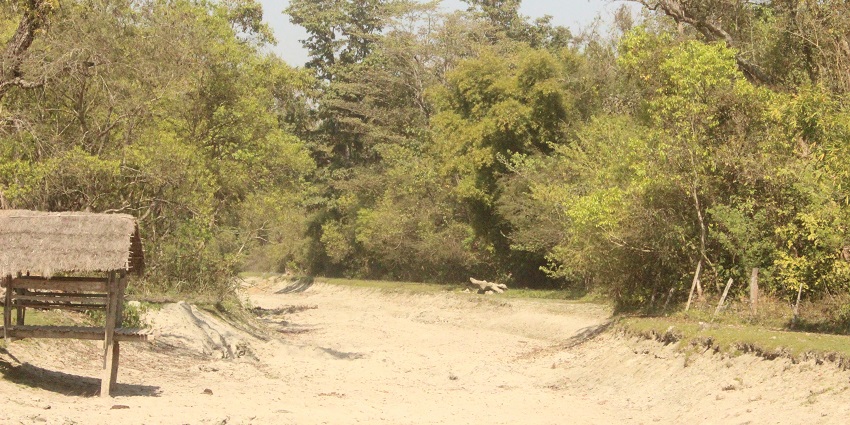
Photo: Rajivkilanashrestha / Wikimedia Commons
The best time to visit the Bardiya National Park is ideally between October and May. Both autumn (October-November) and spring (March-May) provide nice weather and regular sightings of animals. Spring delivers mild weather and blossoming flowers, while autumn brings bright skies and cultural festivities. Winter (December–February) is great for bird-watching for migratory species. Bardiya national park timings are 9 AM to 8 PM.
Other Factors To Consider
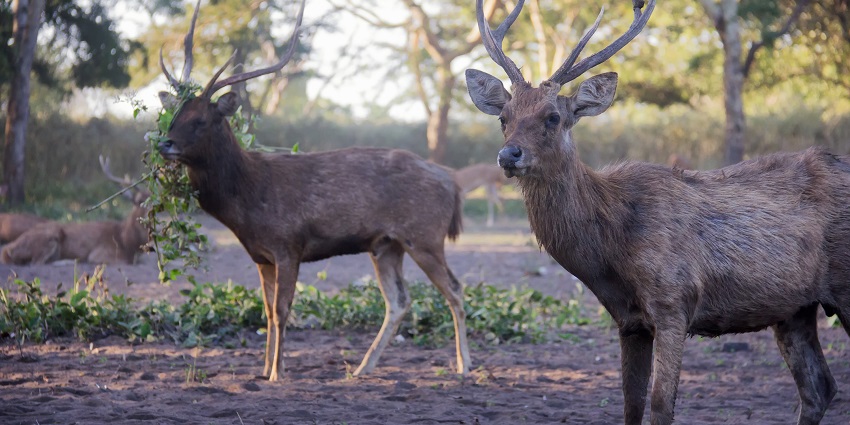
Photo: Wiaskara / Wikimedia Commons / Image For Representation Only
Cost Of The Park Tickets: Bardiya national park ticket price is NPR 50 / ₹31 per day per entry for Nepali citizens, NPR 500 / ₹310 per person per day for SAARC nationals, NPR 1,000 / ₹620 per person per day for foreigners.
Tips For Travellers:
- Respect park rules and wildlife and maintain a safe distance from animals.
- Hire a certified local guide for better wildlife spotting and safety.
- Bring binoculars for enhanced wildlife and bird viewing.
- Wear neutral-coloured, comfortable clothing suitable for outdoor activities.
- Pack insect repellent and sunscreen for protection.
- Carry a reusable water bottle to stay hydrated and reduce plastic waste.
- Do not disturb the wildlife while clicking Bardiya National Park photos.
Suggested Read: Jungle Safari In Nepal
Bardiya National Park stands as a testament to Nepal’s rich biodiversity and conservation efforts. This unspoiled environment provides rich cultural experiences and remarkable meetings with uncommon species. Bardiya captivates every nature lover with exciting safaris and quiet village visits. Ready to embark on your own Bardiya adventure? Let TripXL guide you through this natural wonder. Plan your visit to Bardiya National Park right now to have lasting experiences.
Cover Photo: Dhiroj Prasad Koirala / Wikimedia Commons


 WhatsApp
WhatsApp
 Twitter
Twitter









